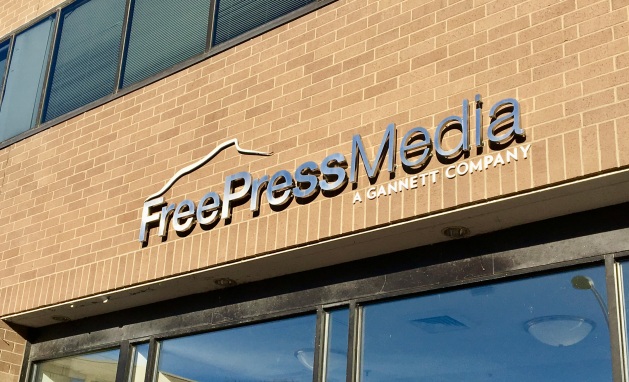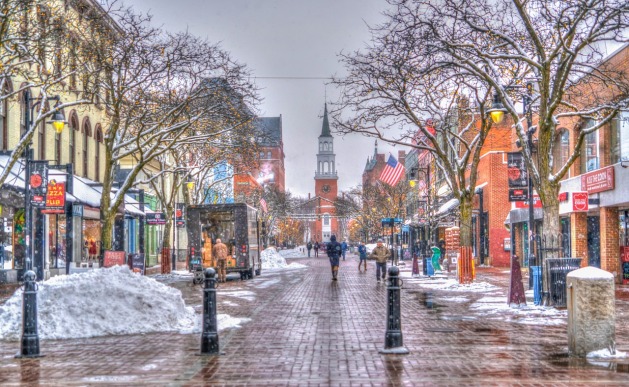Previously published at WGBHNews.org.
In late 2015 I paid a visit to Burlington, Vermont, to survey the damage wrought by Gannett Co., the newspaper chain that owns the Burlington Free Press. Paid weekday print circulation at the state’s largest daily had fallen from about 50,000 to 16,000. The editorial staff, which at one time was close to 60 journalists, had shrunk to around 25.
“Obviously it’s a little tougher and you do have to pick your spots,” the legendary Free Press reporter Michael Donoghue, who had just retired, told me. “We were always thought of as the newspaper of record because everything would be in there. I’m not sure there’s a newspaper of record technically in Vermont anymore.”
To be fair, what happened to the Free Press was not much different from what has happened to newspaper after newspaper across the country. Fortunately other media organizations in Vermont arose to fill the gap — Seven Days, a vibrant alt-weekly; VT Digger, a well-funded statewide nonprofit investigative project; and Vermont Public Radio, which had boosted its local coverage. Still, the Free Press and its corporate overlords at Gannett had failed at their mission of holding government and other institutions to account.
I offer this story because now we are being asked to save Gannett from the ravages of something much worse. And we should. The Wall Street Journal’s Cara Lombardo reported on Sunday that Digital First Media, the Death Star of newspaper chains, is seeking to acquire Gannett, which owns USA Today as well as about 100 other publications. Digital First owns about 50 dailies, including three in Massachusetts: the Boston Herald, The Sun of Lowell, and the Sentinel & Enterprise of Fitchburg.
Why should we care when Gannett has been doing such a poor job? Because things can always be worse. Gannett ownership has been awful in the usual way. Digital First, controlled by the hedge fund Alden Global Capital, is uniquely awful. Its decimation of the papers it owns sparked what proved to be a futile insurrection last year at its flagship, The Denver Post. Newsrooms have literally been closed, with journalists forced to fend for themselves, from the Fitchburg paper to, most recently, The Record of Troy in upstate New York.
Executives at chains such as Gannett and GateHouse Media, hardly beloved at the local level, nevertheless seem to be trying to figure out a long-term plan. Gannett has remained committed to investigative reporting. GateHouse has set up a business-services and marketing division known as ThriveHive, which, if nothing else, suggests that the company is committed to staying in business. Digital First, by contrast, appears to be engaged in what economists refer to as “harvesting” — that is, taking as much money out of the shrinking newspaper business as possible before closing the doors and turning off the lights.
“The dirty little secret that DFM [Digital First Media] learned is that — at least for now — it can sell longtime readers an inferior (or, to use the technical term, crappier) newspaper and only 10 percent each year will cancel,” writes Philly.com columnist Will Bunch. “Do the math, though, and it’s clear that much of America outside the biggest cities will become news deserts by the early 2020s.”
And to think that at one time Gannett was considered the poster child for greedy corporate newspaper chains. In his classic series of books dating back to the 1980s called “The Media Monopoly,” the late media critic Ben Bagdikian labeled Gannett as “the largest and most aggressive newspaper chain in the United States,” noting that the profit margin at some of its local papers was an “astonishing” 30 percent to 50 percent. Bagdikian also described Gannett as “an outstanding contemporary performer of the ancient rite of creating self-serving myths, of committing acts of greed and exploitation but describing them through its own machinery as heroic epics.”
So here we go again. Gannett, as bad as it has been for the communities it serves, is being held up as an exemplar of local journalism that must be saved. Talk about defining deviancy down. The newspaper analyst Ken Doctor, writing at the Nieman Journalism Lab, reports that Gannett executives may seek to wriggle out of Digital First’s hostile takeover attempt by delivering themselves into the arms of Tribune Publishing, the company formerly known as tronc. Tribune, like Gannett, is known more for its cost-cutting than for its journalism. But anything is better than Digital First.
There is a certain irony in the dilemma now facing Gannett. The company’s model of downsizing newsrooms and driving up profits helped create the crisis that faces the newspaper business today. As newspapers became less comprehensive and less interesting, they lost readers, thus prompting repeated rounds of cuts to keep those profit margins up. Not to push this theory too far — the decimation of advertising-funded news at the hands of digital media is a much larger factor. Still, Gannett-style slash-and-burn management played a role.
Now Gannett is reaping what it sowed. We should all hope that Gannett’s board is successful in fighting off Digital First. But we should also understand that this is strictly a choice between the lesser of two evils. Democracy deserves better.
Talk about this post on Facebook.








